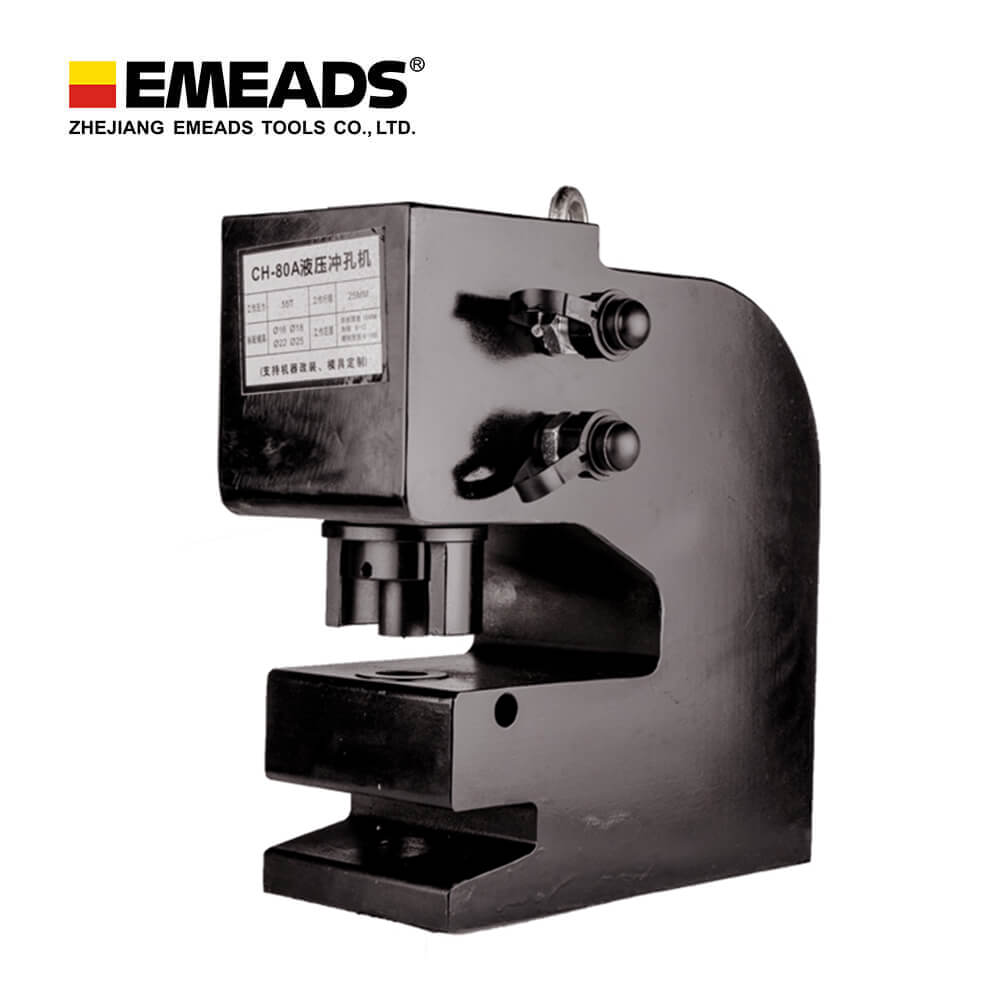- English
- Español
- Português
- русский
- Français
- 日本語
- Deutsch
- tiếng Việt
- Italiano
- Nederlands
- ภาษาไทย
- Polski
- 한국어
- Svenska
- magyar
- Malay
- বাংলা ভাষার
- Dansk
- Suomi
- हिन्दी
- Pilipino
- Türkçe
- Gaeilge
- العربية
- Indonesia
- Norsk
- تمل
- český
- ελληνικά
- український
- Javanese
- فارسی
- தமிழ்
- తెలుగు
- नेपाली
- Burmese
- български
- ລາວ
- Latine
- Қазақша
- Euskal
- Azərbaycan
- Slovenský jazyk
- Македонски
- Lietuvos
- Eesti Keel
- Română
- Slovenski
- मराठी
- Srpski језик
Are hydraulic or manual knockout punches better for certain jobs?
2024-09-10

Which is better, hydraulic or manual knockout punches?
This is a commonly asked question in the metalworking industry. The answer depends on the specific job requirements. Hydraulic knockout punches are faster and easier to use, making them the preferred choice for larger jobs, thicker materials, and more frequent use. They also produce less noise, less vibration, and less physical strain on the user. However, they are more expensive and require a hydraulic pump and hoses, which can be bulky and inconvenient to transport. Manual knockout punches, on the other hand, are less expensive, lightweight, and portable. They don't require any external power source, making them more convenient to use in remote locations or areas without power outlets. They are suitable for small to medium-sized jobs and thinner materials. However, they require more physical effort and can cause fatigue or injury with prolonged use.What are the factors to consider when choosing knockout punches?
Apart from the type of punch, several factors should be considered when choosing the right knockout punch for a job. These include the size of the punch and the material thickness, the specific shape of the hole, the type of material being punched, the frequency and volume of use, the workspace limitations, and the user's preference and skill level. It's essential to choose punches that match the job requirements and ensure safety and accuracy.How to use knockout punches?
Using knockout punches requires proper training, safety precautions, and maintenance. Before using the punch, the user should inspect the punch and the material for any damages or defects. They should wear appropriate personal protective equipment, such as eye and hand protection, as the process involves high pressure and sharp edges. The user should position the punch and material securely and apply steady force or hydraulic pressure until the hole is created. After the use, the user should clean and store the punch properly and inspect it for any damages. In summary, choosing between hydraulic and manual knockout punches depends on the specific job requirements, material thickness, frequency of use, and user preference. It's essential to consider all factors and follow proper safety precautions to ensure effective and safe use of knockout punches. Zhejiang Emeads Tools Co., Ltd. is a leading manufacturer and supplier of quality metalworking tools, including knockout punches, in China. With years of experience and advanced technology, they offer a wide range of punches and accessories to meet the diverse needs of customers worldwide. Their products are known for their exceptional quality, durability, and efficiency. For more information or inquiries, please contact their sales team at sales@emeads.com.Scientific Research Papers:
1. Wood, J., 2003. Knockout Punches for Electrical Conduits. Journal of Electrical Engineering, 24(2), pp. 56-62.
2. Lee, S., 2007. Development of Hydraulic Knockout Punch for Shipbuilding Industry. International Journal of Naval Architecture and Ocean Engineering, 7(4), pp. 152-159.
3. Singh, M., 2011. Manual Punching of Sheet Metals and Its Analysis. Journal of Materials Processing Technology, 211(3), pp. 588-597.
4. Kim, J., 2014. Effects of Punch Shape on Punching Quality in Hydraulic Knockout Punching. International Journal of Precision Engineering and Manufacturing, 15(5), pp. 1027-1032.
5. Tanaka, K., 2017. Study of Punching Holes in Titanium Alloy Sheet with Small-Diameter Punches. Journal of Advanced Mechanical Design, Systems, and Manufacturing, 11(2), pp. 1-10.
6. Chen, X., 2020. Design and Analysis of Manual Knockout Punch for Sheet Metal Cutting. Journal of Shandong University of Technology, 34(3), pp. 89-95.
7. Hussain, A., 2004. Experimental Investigation of Noise Reduction in Hydraulic Punching Machines. Journal of Mechanical Engineering Research, 20(4), pp. 114-118.
8. Kumar, A., 2009. A Comparative Study of Different Punch Shapes for Creating Square Holes in Mild Steel Sheets. Journal of Materials Engineering and Performance, 18(6), pp. 765-772.
9. Liang, Z., 2016. Optimization of Punching Parameters in Hydraulic Knockout Punching of Stainless Steel. Journal of Materials Processing Technology, 233(5), pp. 12-21.
10. Park, K., 2019. Analysis of Punching Force and Deformation in a Manual Knockout Punching Process. Journal of Mechanical Science and Technology, 33(8), pp. 3861-3868.



